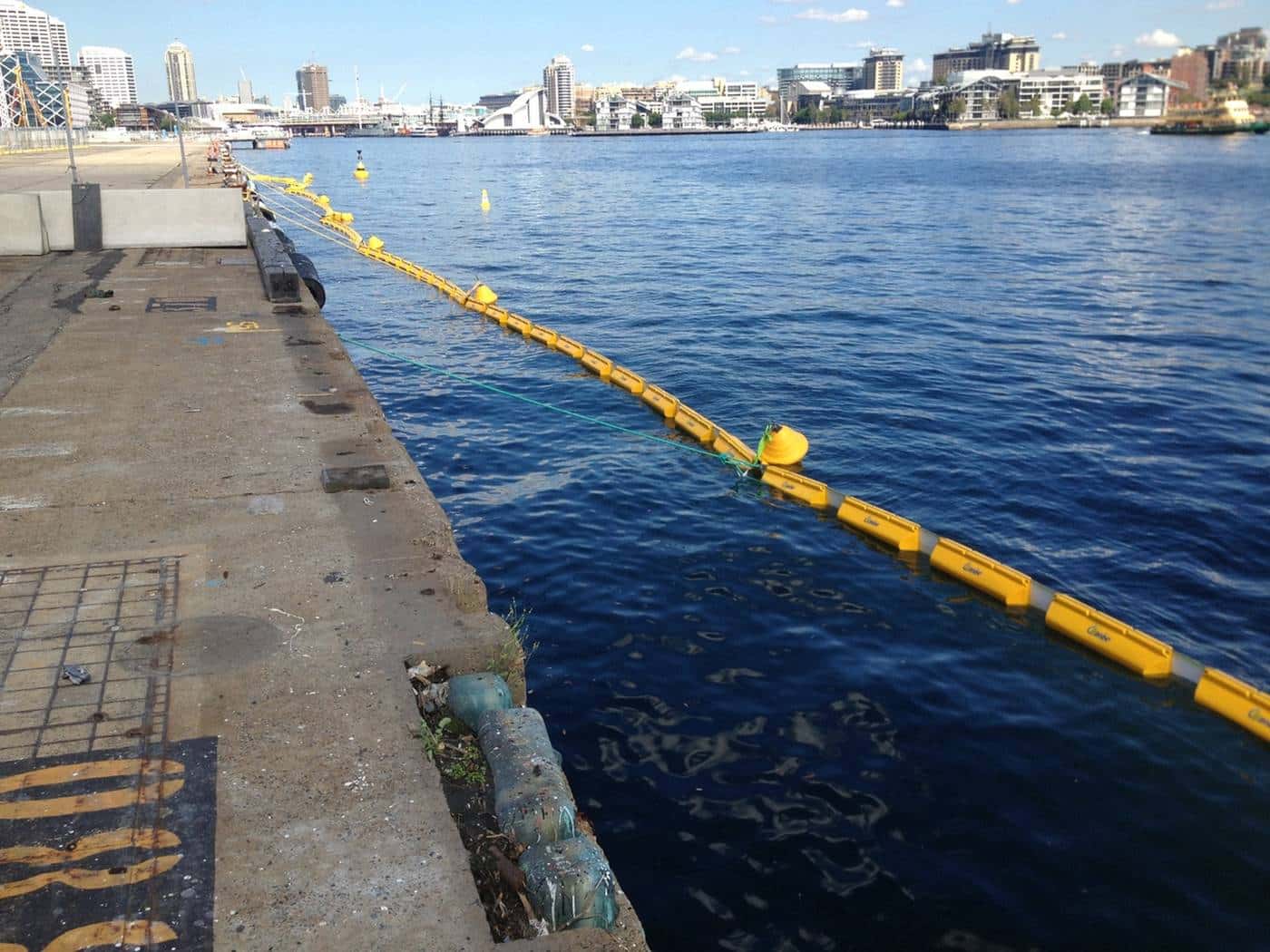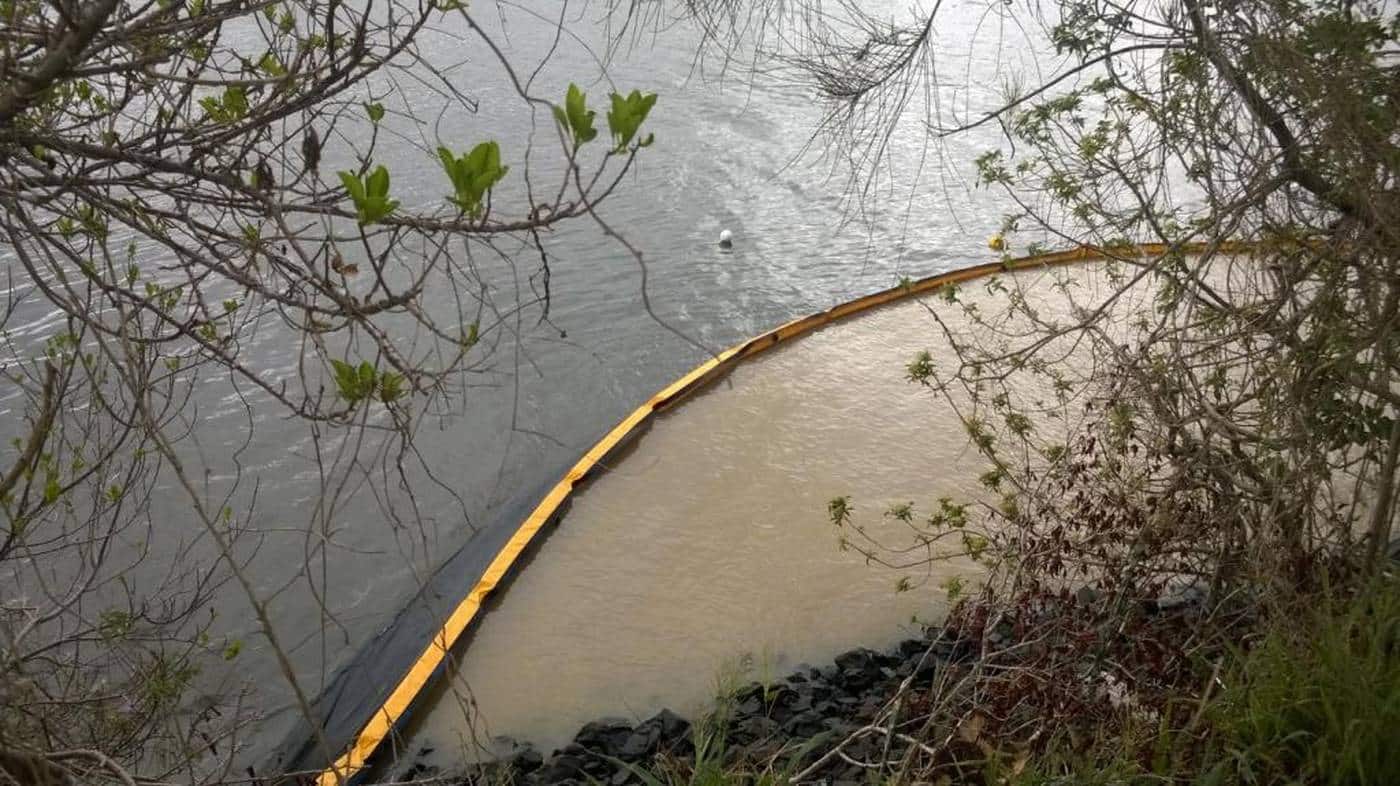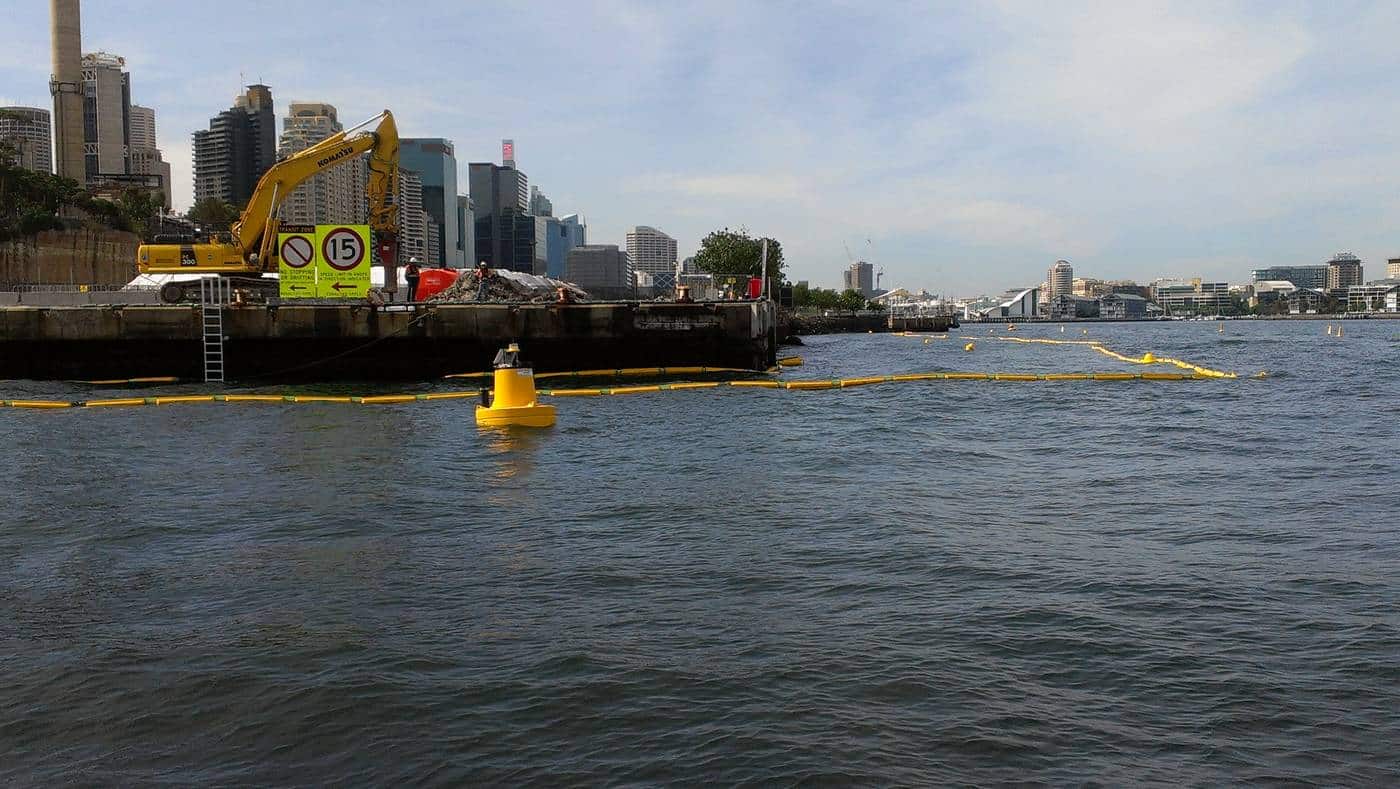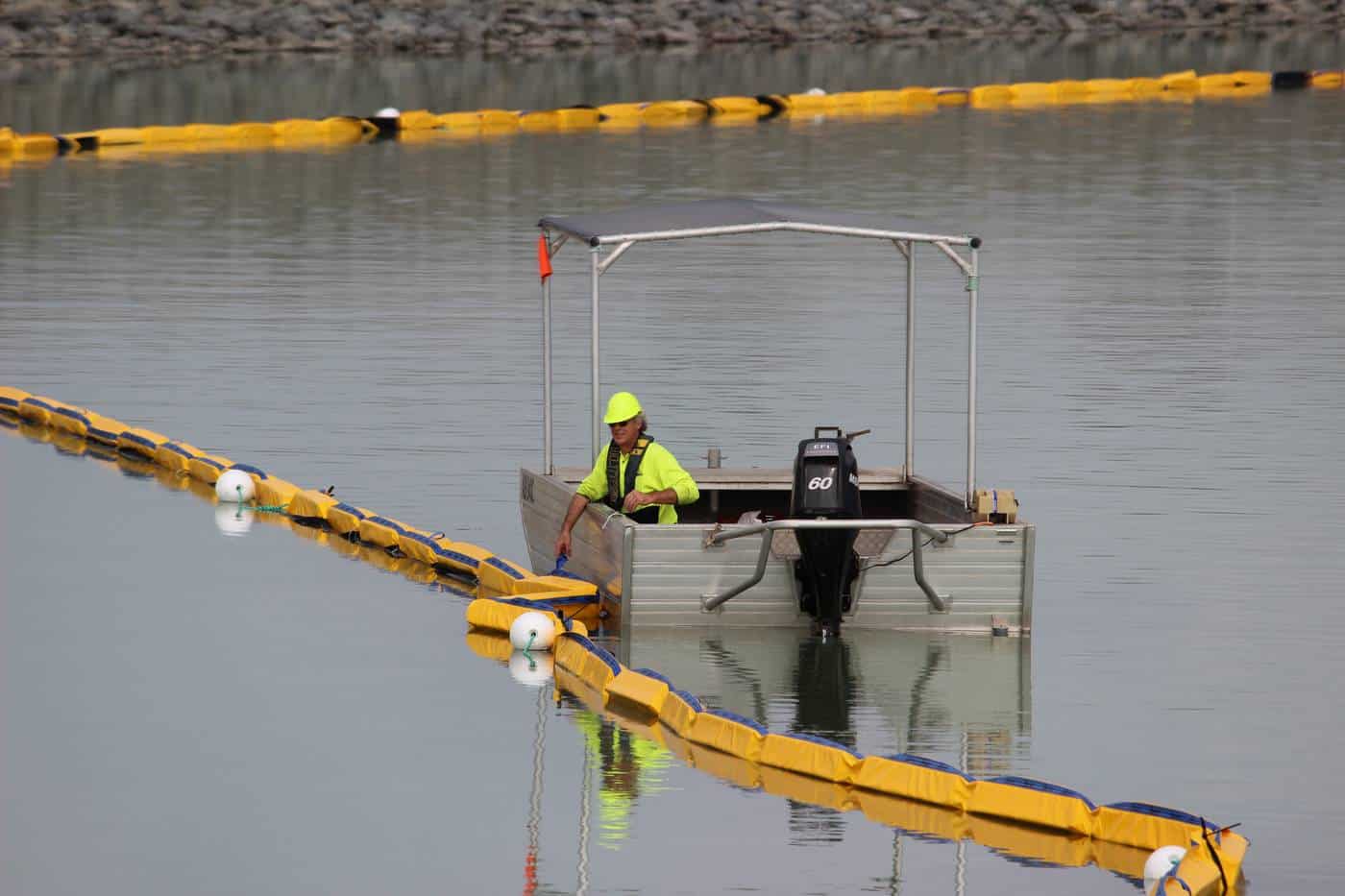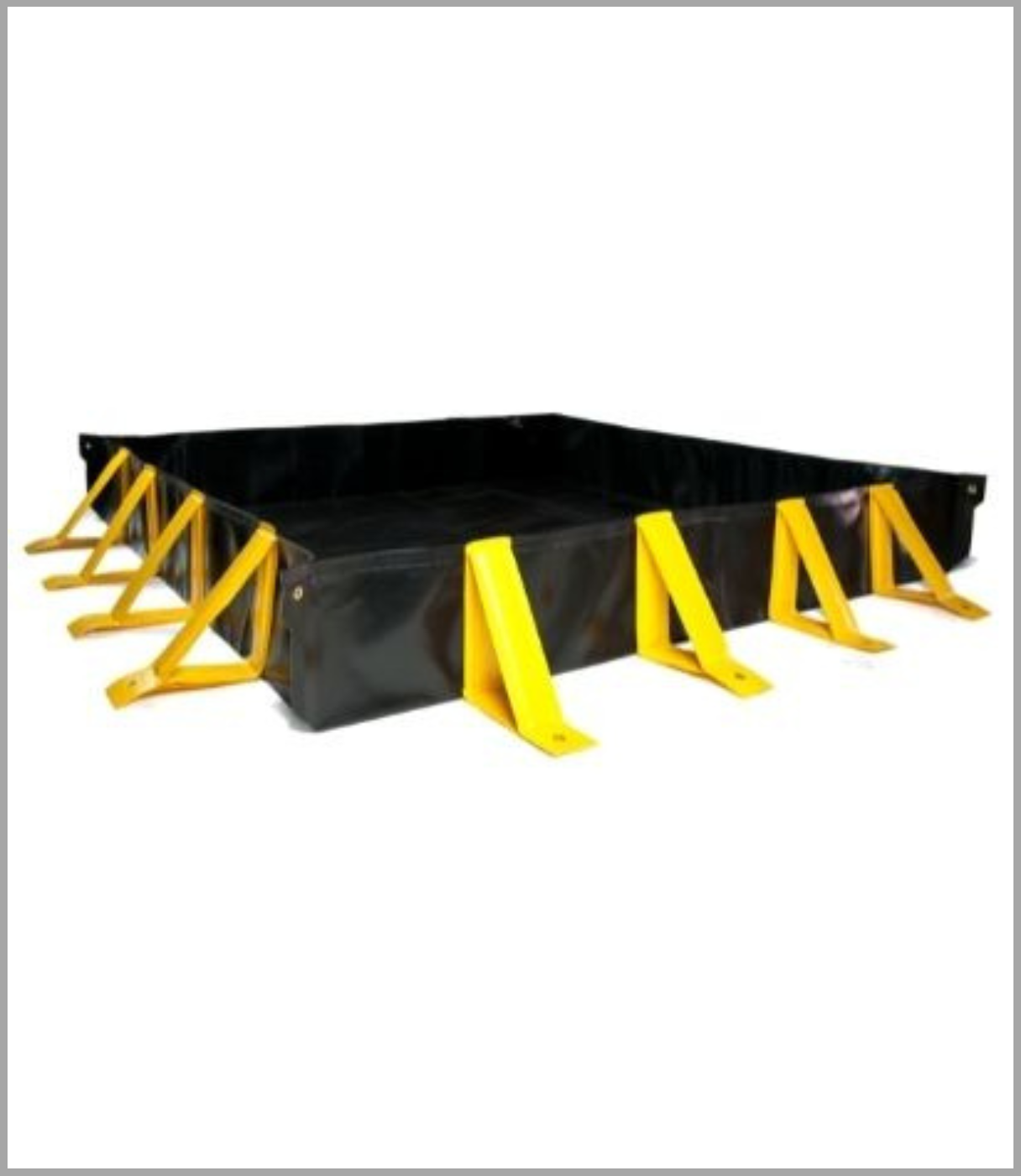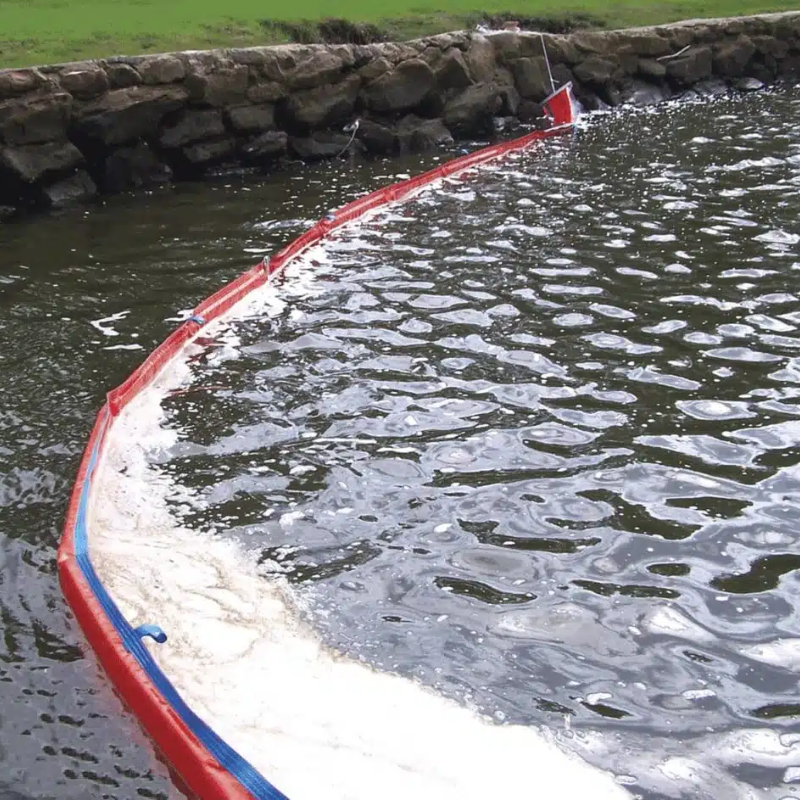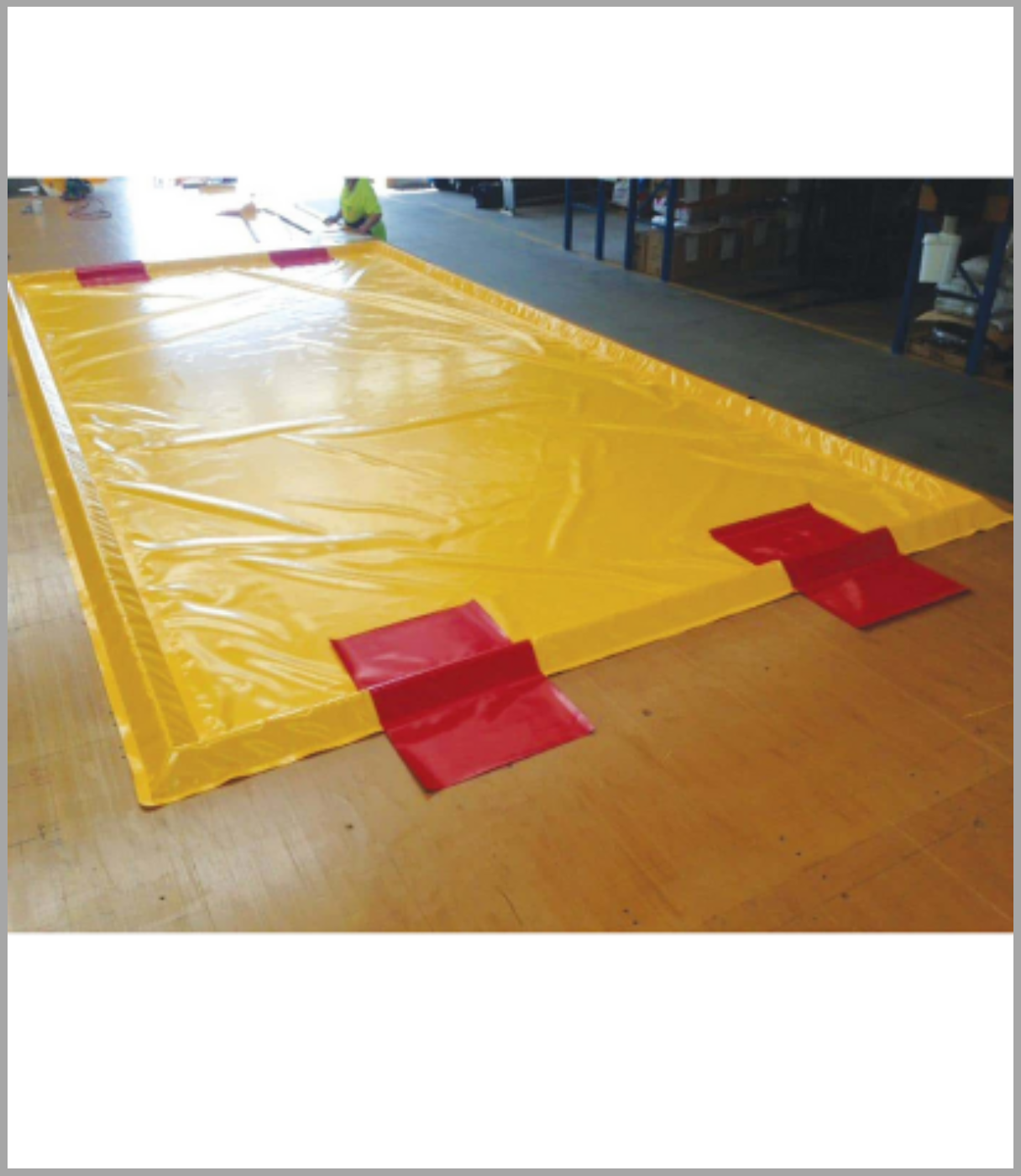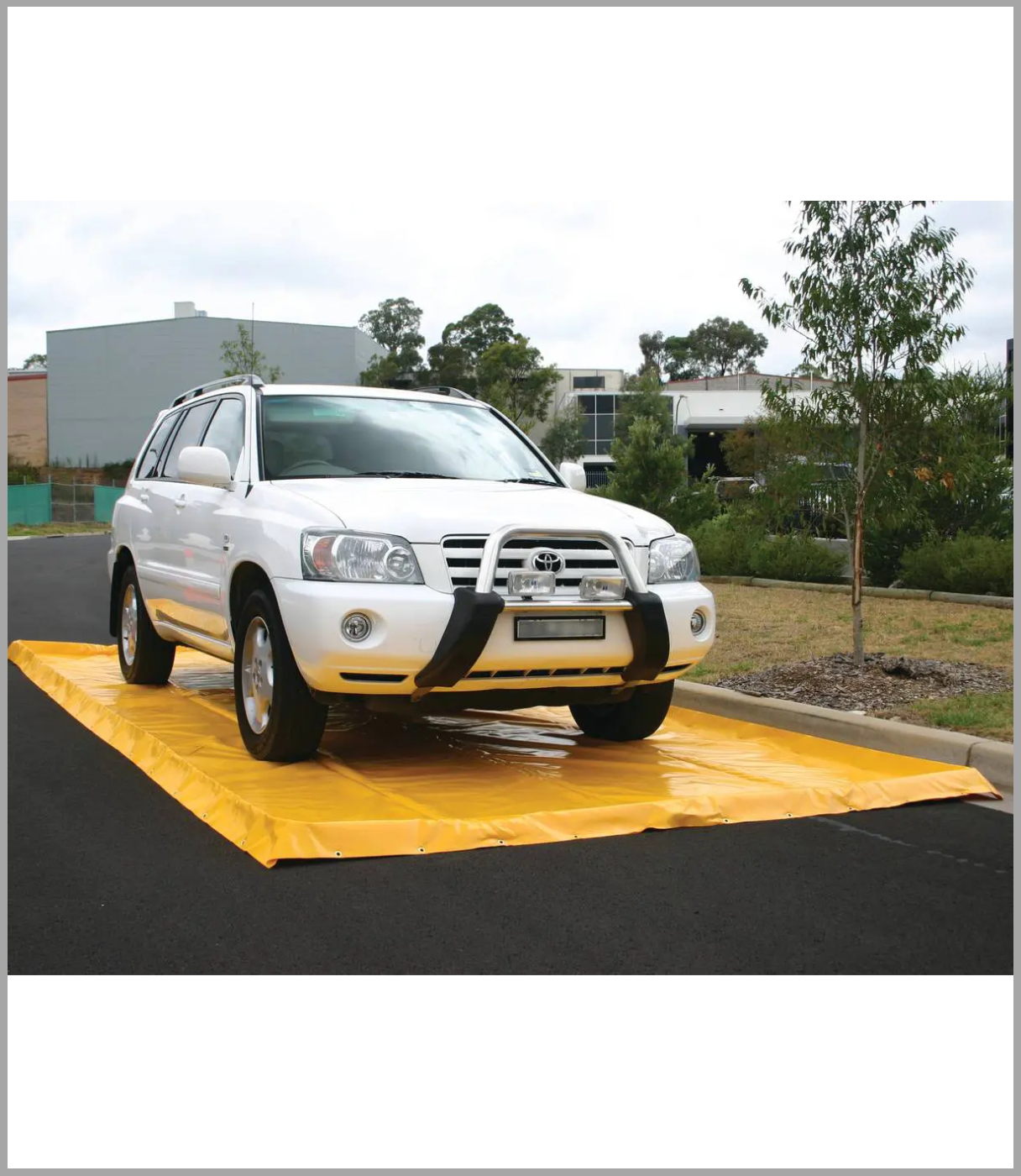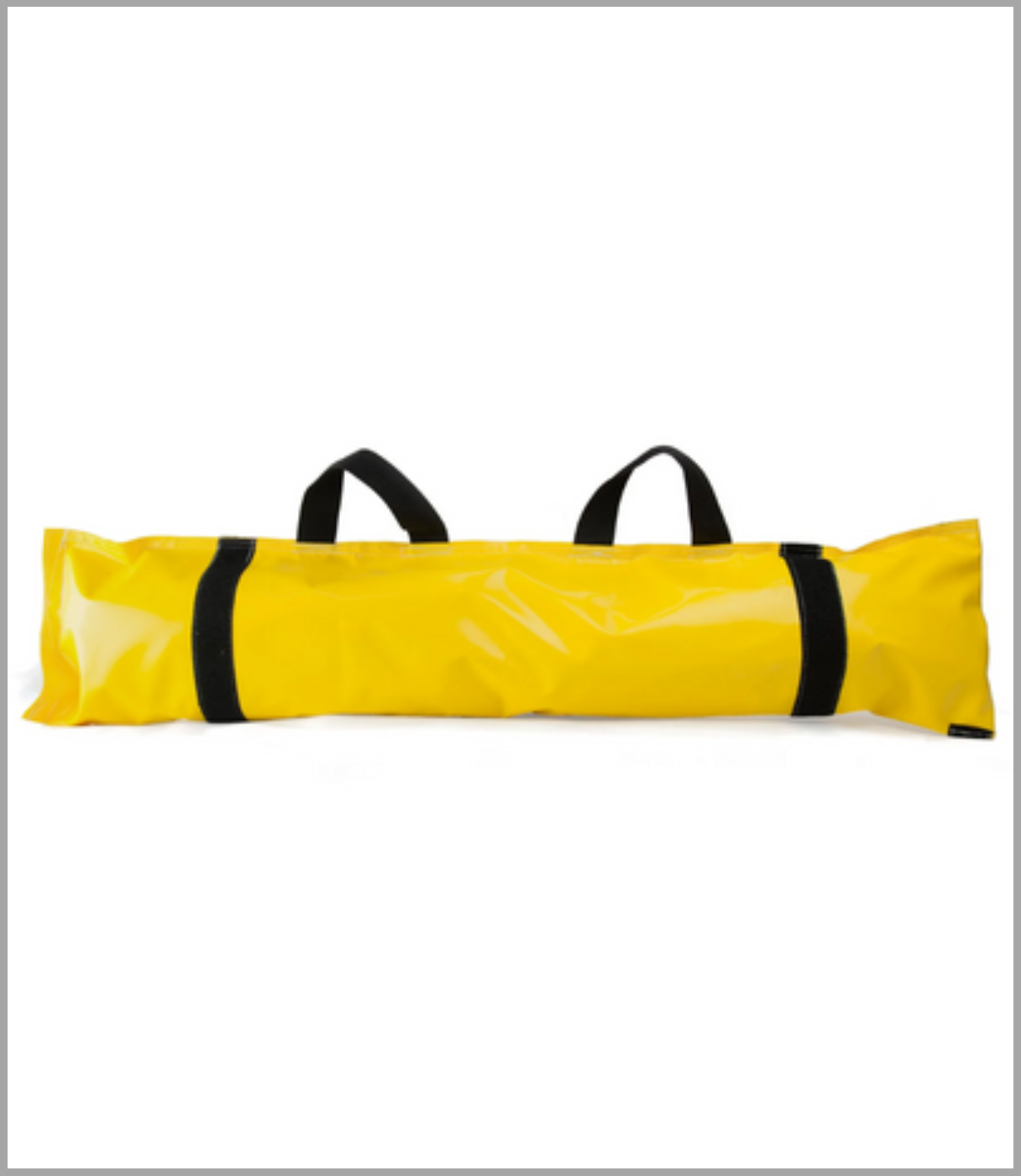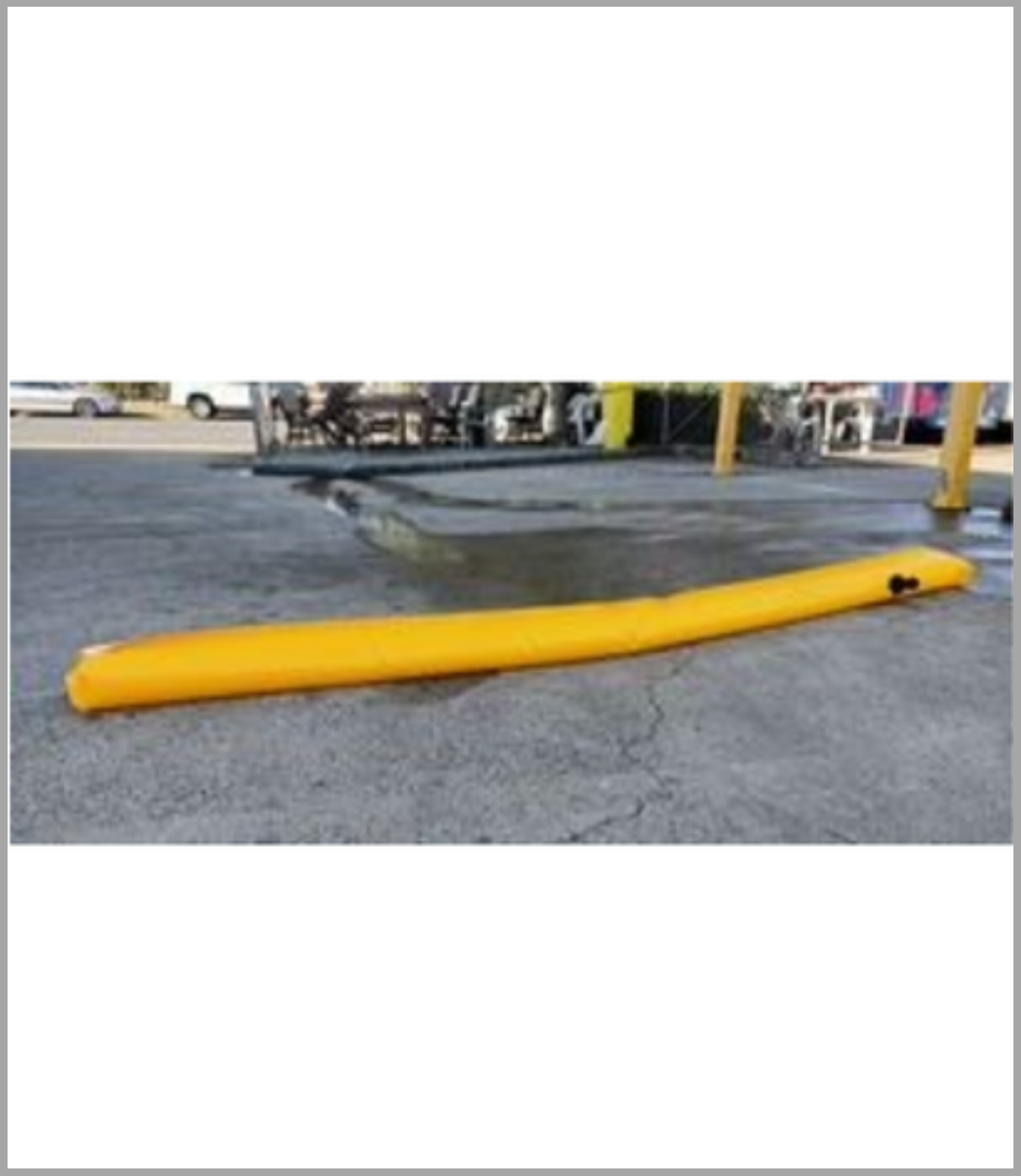When sediment escapes during construction or dredging, the consequences are immediate — water quality declines, regulators take notice, and projects stall. That’s why every serious marine contractor turns to Silt Curtains (Turbidity Curtains).
Our curtains are not just fabric and floats — they’re engineered systems proven across harbours, rivers, tailings dams, and offshore works. Each section is fabricated for strength, transport, and deployment efficiency, so your crews spend less time struggling with gear and more time keeping the project moving.
Where Silt Curtains Are Used:
- Dredging, piling, and bridge works
- Harbour & port expansions
- Tailings dams & water quality improvement
- Reclamation and foreshore maintenance
- Sediment ponds & environmental remediation
How Silt Curtains Are Built:
- Marine-grade closed-cell flotation — resistant to waterlogging and impact
- Reinforced PVC or geotextile skirts — available in 0.5 m increments up to 20 m depth
- Galvanised ballast chain — prevents flaring and keeps skirts vertical
- ASTM-style connectors — fast joining of multiple runs
- Palletised & furled sections — up to 100 m per pallet, pre-connected if required
Result: A system that installs quickly, holds position under load, and can be cleaned and reused across multiple projects.
How to Choose the Right Silt Curtain
| Skirt Depth | STILL WATER | RIVER / PORT | |||||||
| 1-2m | 2-6m | 6-12m | >12m | 1-2m | 2-6m | 6-12m | >12m | ||
| Class 1 | 50 mm float width | ✓ | |||||||
| Class 2 | 100 mm float width 150 | ✓ | ✓ | ✓ | |||||
| mm float width 150 mm | ✓ | ✓ | ✓ | ✓ | |||||
| Class 3 | float width 200 mm | ✓ | |||||||
| float width External | ✓ | ✓ | |||||||
| Heavy | HDPE Floats | ✓ | ✓ | ✓ | ✓ | ||||
| Skirt Depth | HARBOUR | OPEN WATER / OCEAN | |||||||
| 1-2m | 2-6m | 6-12m | >12m | 1-2m | 2-6m | 6-12m | >12m | ||
| Class 1 | 50 mm float width | ||||||||
| Class 2 | 100 mm float width 150 | ||||||||
| mm float width 150 mm | ✓ | ✓ | |||||||
| Class 3 | float width 200 mm | ✓ | ✓ | ✓ | ✓ | ||||
| float width External | ✓ | ✓ | ✓ | ✓ | ✓ | ✓ | |||
| Heavy | HDPE Floats | ✓ | ✓ | ✓ | ✓ | ||||
While these guidelines cover the most common conditions, every waterway is different. Factors such as depth at low tide, current, vessel traffic, sediment load, and regulatory requirements can all change what "best" looks like for your project.
That's why we've developed a simple Project Questionnaire. By answering a few targeted questions, our technical team can recommend the exact curtain type, depth, and anchoring layout you need — saving time, avoiding costly mistakes, and ensuring compliance.

Benefits of
Silt Curtain
Silt Curtain
Regulatory Confidence
Designed around EPA and local permit standards, helping you pass audits and inspections without delays.
Proven in the Field
From quiet ponds to offshore wind projects, these systems have been tested and trusted across Australia, NZ, and the Pacific.
Rugged Components
High-strength fabrics, reinforced seams, and reliable floats & chains built to survive harsh deployment cycles.
Faster Deployment
Palletised, pre-connected runs reduce deck time and manpower during critical installation windows.
Reuse Value
Wash, dry, and inspect — quality curtains can serve multiple jobs, lowering lifetime costs.
Technical & Educational Deep-Dive
For those who want the full picture — project managers, engineers, compliance officers — here’s how a silt curtain actually works in the field, from delivery to redeployment.
How Silt Curtains Are Supplied
Every project starts with delivery. Our curtains arrive furled and palletised, so crews don’t wrestle with loose fabric on the dock. Each pallet contains up to 100 metres of connected curtain, numbered and labelled so you always know which section comes next.
On larger jobs, multiple pallets are staged in sequence. If time is critical, we can even supply sections pre-connected, allowing crews to launch and tow them directly into position. This level of organisation reduces deck time and prevents costly mistakes during deployment.

Finding the Right Depth
Depth isn’t just a number — it’s the balance between control and performance. A curtain that’s too shallow lets fines escape, while one that drags the seabed risks flaring, erosion, and plume release.
That’s why we recommend leaving 0.3–0.5 metres of clearance above the seabed at low tide. This gap relieves hydraulic pressure and allows particles to settle naturally.
Think of the curtain as a brake on water flow, not a wall. It slows the current long enough for suspended sediment to drop out, protecting the waterway without choking it.
What Determines Effectiveness
The effectiveness of a silt curtain comes down to how well it’s matched to the site:
- Sediment type & load – Fine silts behave differently from coarse sands or tailings.
- Curtain design – Skirt depth, fabric type, float size, and ballast ratio must all suit conditions.
- Mooring layout – Anchors, spacing, and orientation control stability and flare.
- Hydrodynamics – Currents, tides, wind, wave climate, and vessel traffic constantly test the system.
A silt curtain doesn’t “block” water. It manages flow. When correctly designed and anchored, it creates a controlled zone where turbidity can settle — reducing environmental risk and keeping regulators satisfied.

Why Installation Defines Success
The strongest curtain can still fail if deployed incorrectly. That’s why installation is where projects are won or lost.
- Prepare the site first – Anchors and mooring lines must be installed in advance.
- Tow steadily – Curtains are moved into place while still furled, at a safe speed (≤3 knots).
- Check for twists – Before unfurling, ensure the skirt is clear and aligned.
- Release ties cleanly – Allow the skirt to drop vertically without snagging or tangling.
- Inspect final layout – Confirm anchor geometry, ballast alignment, and clearance from the seabed.
Done right, installation transforms a packaged product into a reliable line of defence against turbidity. Done poorly, it risks early failure, plume escape, and even stop-work orders.

When It’s Time to Retrieve the Curtain
Project finished? Curtain needs servicing? Retrieval should be as smooth as deployment.
- Disconnect anchors and moorings in sequence.
- Furl the skirt securely against the floats.
- Tow sections back at controlled speed to the recovery point.
- Repack on pallets or reels for cleaning.
Handled properly, removal doesn’t stir up sediment or damage the curtain — it’s simply the closing stage of the project.

Extending Curtain Life Through Reuse
A well-made silt curtain isn’t a one-off expense — it’s a reusable asset. After retrieval:
- Wash down – High-pressure cleaning removes silt and biofouling.
- Dry fully – Prevents mould, odours, and fabric breakdown.
- Inspect carefully – Check seams, floats, ballast chains, and connectors.
- Service if needed – Replace worn components.
- Repack and store – Palletise for easy redeployment.
With the right maintenance, a curtain can be redeployed across multiple jobs, turning an environmental requirement into a cost-saving investment.



